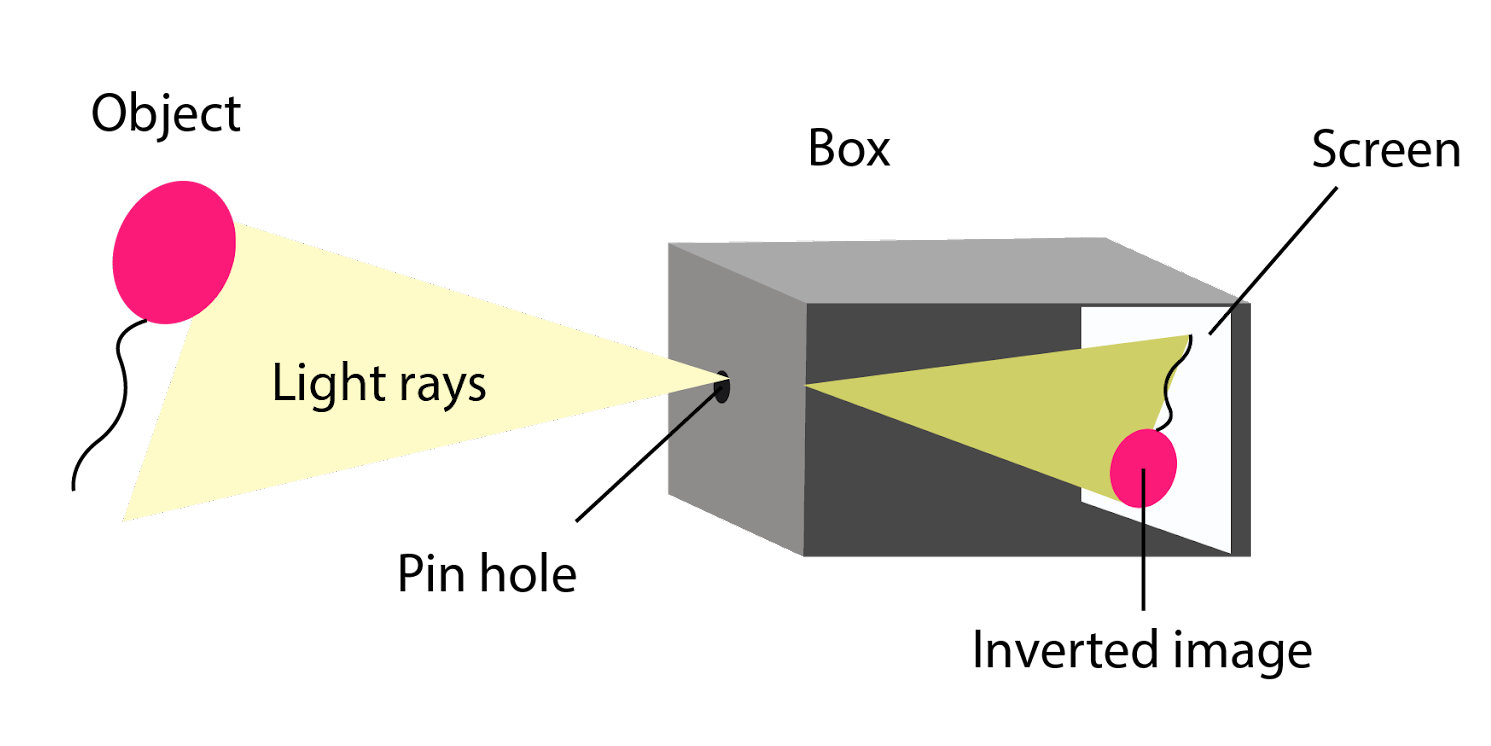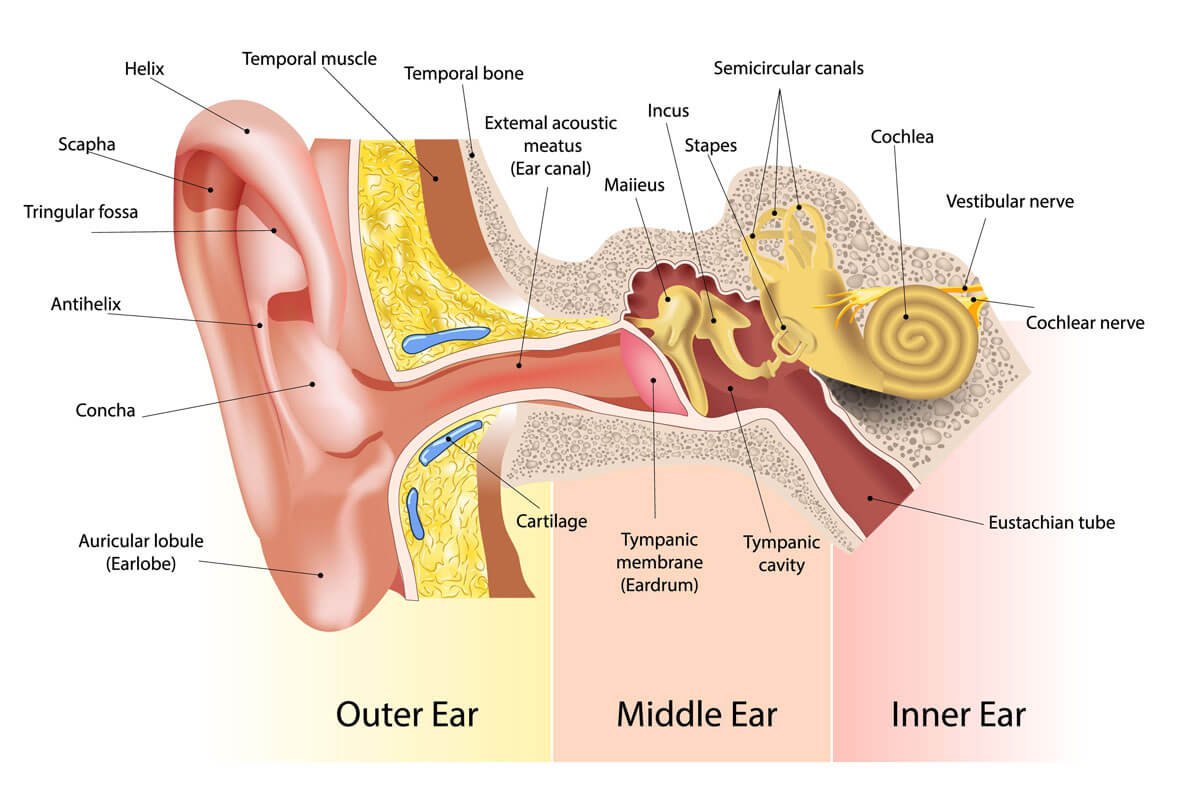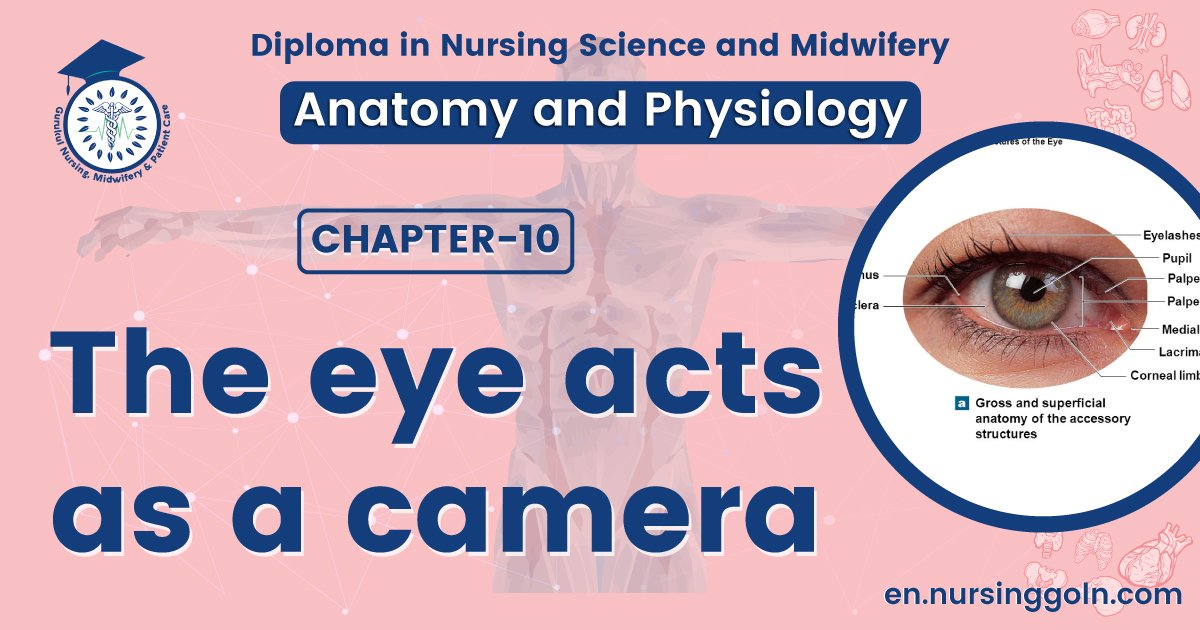The eye acts as a camera-The course is designed for the basic understanding of anatomical structures and physiological functions of human body, musculoskeletal system, digestive system, respiratory system; cardiovascular system; urinary system, endocrine system, reproductive system, nervous system, hematologic system, sensory organs, integumentary system, and immune system.The aim of the course is to acquire knowledge and skills regarding anatomy and physiology.

The eye acts as a camera
Eye as a camera because
- Eye has a lens system.
- It has a variable aperture system i.e. the pupil.
- Retina corresponds to the film.
- The lens system of the eye is composed of 4 refractive interface
- The interface between air & the anterior surface of the cornea.
- The interface between posterior surface of the cornea & the aquous humor.
- The interface between the aquous humor & the anterior surface of the lens of the eyes and
- The interface between the posterior surface of the lens & the vitreous humor but in camera single lens is used.
The external, middle, and internal ear
The ear is a marvelously sensitive structure. Its sensory receptors can convert sound vibrations into electrical signals 1000 times faster than photoreceptors can respond to light. Beside receptors for sound waves, the ear also contains receptors for equilibrium (balance).
Structure of the Ear
The ear is divided into three main regions:
(1) The external ear, which collects sound waves and channels them inward,
(2) The middle ear, which conveys sound vibrations to the oval window, and
(3) The internal ear, which houses the receptors for hearing and equilibrium.

(1) External (Outer) Ear :-
The external (outer) ear collects sound waves and passes them inward. It consists of
- An auricle,
- The External auditory canal, and
- The Eardrum.
The auricle
the part of the ear that we can see, is a skin-covered flap of elastic cartilage shaped like the flared end of a trumpet. It plays a small role in collecting sound waves and directing them toward
The external auditory canal
(audit = hearing), a curved tube that extends from the auricle and directs sound waves toward the eardrum. The canal contains a few hairs and ceruminous glands (cer wax), which secrete cerumen (earwax). The hairs and cerumen help prevent foreign objects from entering the ear.
The eardrum
The eardrum also called the tympanic membrane (tympan = adrum), is a thin, semitransparent partition between the external auditory canal and the middle ear. Sound waves cause the eardrum to vibrate. Tearing of the tympanic membrane, due to trauma or infection, is called a perforated eardrum.
(2) The Middle Ear :-
The middle ear is a small, air-filled cavity between the eardrum and inner ear. An opening in the anterior wall of the middle ear leads directly into the auditory tube, commonly known as the eustachian tube, which connects the middle ear with the upper part of the throat. When the auditory tube is open, air pressure can equalize on both sides of the eardrum.
Otherwise, abrupt changes in air pressure on one side of the eardrum might cause it to rupture. Extending across the middle ear and attached to it by means of ligaments are three tiny bones called auditory ossicles. Equally tiny skeletal muscles control the amount of movement of these bones to prevent damage by excessively loud noises.

(3) Internal (Inner) Ear :-
The internal (inner) ear is divided into the outer bony labyrinth and inner membranous labyrinth The bony labyrinth is a series of cavities in the temporal bone, including the cochlea, vestibule, and semicircular canals. The cochlea is the sense organ for hearing, and the vestibule and semicircular canals are the sense organs for equilibrium and balance.
(Ref:- J. Tortora, 8th edition, P-314-316)
Read more:
